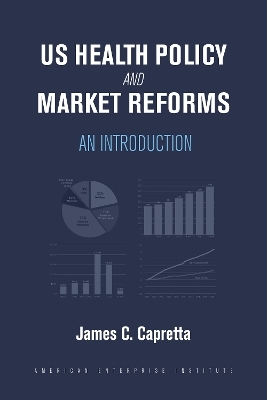
US Health Policy and Market Reforms
An Introduction
Seiten
2022
AEI Press (Verlag)
978-0-8447-5046-0 (ISBN)
AEI Press (Verlag)
978-0-8447-5046-0 (ISBN)
- Lieferbar (Termin unbekannt)
- Versandkostenfrei innerhalb Deutschlands
- Auch auf Rechnung
- Verfügbarkeit in der Filiale vor Ort prüfen
- Artikel merken
Health care has been a prominent topic in the US national political conversation for decades, with no end in sight. The status quo, even before the COVID-19 pandemic exposed flaws in the nation’s public health system, has been too dysfunctional for the issue to fall far down the list of voter priorities. Among other things, a large segment of the US population remains uninsured, and the relentless annual increase in medical care costs in excess of income growth is placing increasing financial strain on households and governments.
While these problems have fueled a strong desire for change, there is a divide over how to proceed, which has made reaching consensus elusive.
Most Americans are familiar with the views advanced by one side of the debate. Medicare for All, which would have the federal government run a public insurance plan for the entire country, is the paradigmatic reform advanced by those who favor full governmental control. It and similar reforms have been discussed widely in recent years in high-profile political campaigns.
The alternative—more reliance on market forces—is less well-known or understood, partly because there is less consensus among those who favor it on what it would entail.
This volume attempts to describe in some detail one version of such a plan. It also explains the major features of current US health policy and the relevant history of how we arrived at this point, because the proposed reforms are best understood in relation to the incumbent system. In general terms, the recommended changes would inject more discipline and consumer choice into what already exists rather than replace it with something entirely new.
The focus of the recommendations is not on better readiness for the next pandemic or public health crisis. That certainly should be a priority for Congress. However, even if such improvements get approved, the nation’s underlying system of insurance and care providers will remain mired in dysfunction. The focus of this volume is on reforming that system to better deliver services that patients need regardless of whether a pandemic is creating global turmoil.
While these problems have fueled a strong desire for change, there is a divide over how to proceed, which has made reaching consensus elusive.
Most Americans are familiar with the views advanced by one side of the debate. Medicare for All, which would have the federal government run a public insurance plan for the entire country, is the paradigmatic reform advanced by those who favor full governmental control. It and similar reforms have been discussed widely in recent years in high-profile political campaigns.
The alternative—more reliance on market forces—is less well-known or understood, partly because there is less consensus among those who favor it on what it would entail.
This volume attempts to describe in some detail one version of such a plan. It also explains the major features of current US health policy and the relevant history of how we arrived at this point, because the proposed reforms are best understood in relation to the incumbent system. In general terms, the recommended changes would inject more discipline and consumer choice into what already exists rather than replace it with something entirely new.
The focus of the recommendations is not on better readiness for the next pandemic or public health crisis. That certainly should be a priority for Congress. However, even if such improvements get approved, the nation’s underlying system of insurance and care providers will remain mired in dysfunction. The focus of this volume is on reforming that system to better deliver services that patients need regardless of whether a pandemic is creating global turmoil.
James C. Capretta is a senior fellow and holds the Milton Friedman Chair at the American Enterprise Institute, where he studies health care, entitlement, and US budget policy and global trends in aging, health, and retirement programs. Capretta also serves as a senior adviser to the Bipartisan Policy Center. He previously served in senior positions at the Office of Management and Budget and on the staff of the Senate Budget Committee.
| Erscheinungsdatum | 28.07.2022 |
|---|---|
| Zusatzinfo | Text Boxes; Illustrations; Graphs; Tables |
| Verlagsort | Washington DC |
| Sprache | englisch |
| Maße | 152 x 230 mm |
| Gewicht | 345 g |
| Themenwelt | Medizin / Pharmazie ► Gesundheitswesen |
| Sozialwissenschaften ► Politik / Verwaltung ► Staat / Verwaltung | |
| Technik | |
| ISBN-10 | 0-8447-5046-8 / 0844750468 |
| ISBN-13 | 978-0-8447-5046-0 / 9780844750460 |
| Zustand | Neuware |
| Haben Sie eine Frage zum Produkt? |
Mehr entdecken
aus dem Bereich
aus dem Bereich
Organisationen steuern, Strukturen schaffen, Prozesse gestalten
Buch | Softcover (2024)
Rehm Verlag
38,00 €
Buch | Softcover (2024)
Springer Fachmedien Wiesbaden GmbH (Verlag)
29,99 €


